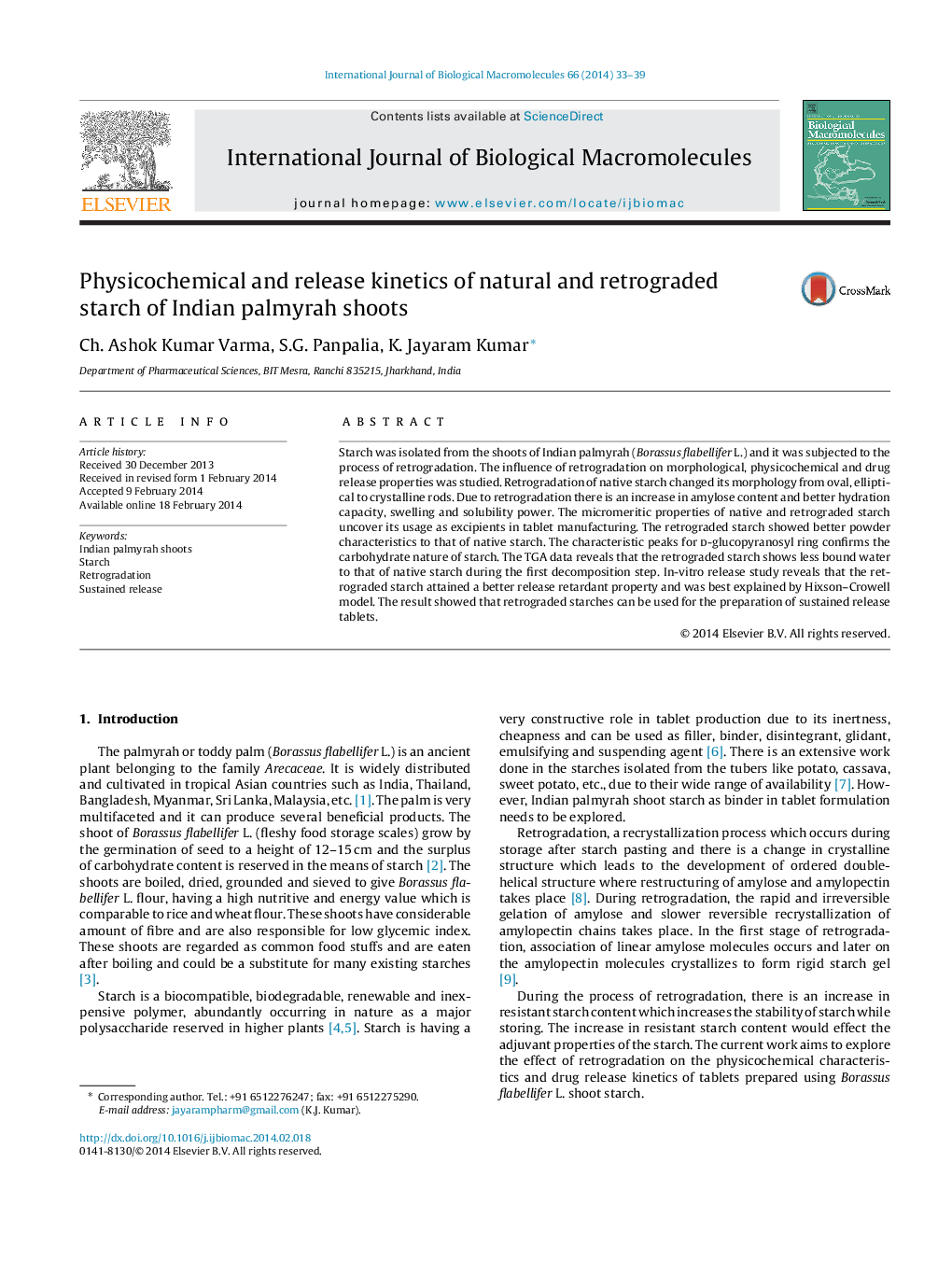| Article ID | Journal | Published Year | Pages | File Type |
|---|---|---|---|---|
| 1986825 | International Journal of Biological Macromolecules | 2014 | 7 Pages |
Starch was isolated from the shoots of Indian palmyrah (Borassus flabellifer L.) and it was subjected to the process of retrogradation. The influence of retrogradation on morphological, physicochemical and drug release properties was studied. Retrogradation of native starch changed its morphology from oval, elliptical to crystalline rods. Due to retrogradation there is an increase in amylose content and better hydration capacity, swelling and solubility power. The micromeritic properties of native and retrograded starch uncover its usage as excipients in tablet manufacturing. The retrograded starch showed better powder characteristics to that of native starch. The characteristic peaks for d-glucopyranosyl ring confirms the carbohydrate nature of starch. The TGA data reveals that the retrograded starch shows less bound water to that of native starch during the first decomposition step. In-vitro release study reveals that the retrograded starch attained a better release retardant property and was best explained by Hixson–Crowell model. The result showed that retrograded starches can be used for the preparation of sustained release tablets.
